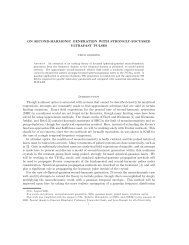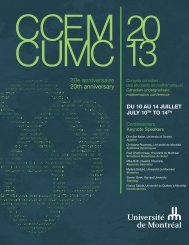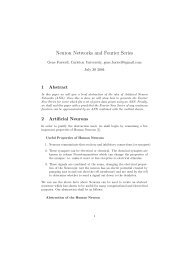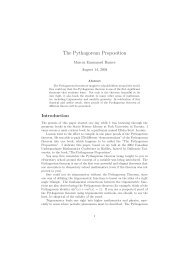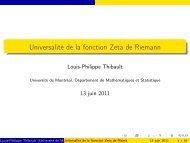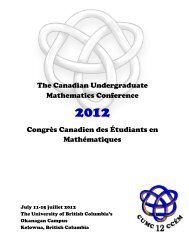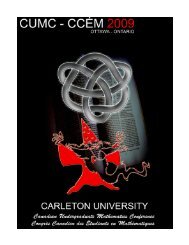booklet - CUMC - Canadian Mathematical Society
booklet - CUMC - Canadian Mathematical Society
booklet - CUMC - Canadian Mathematical Society
You also want an ePaper? Increase the reach of your titles
YUMPU automatically turns print PDFs into web optimized ePapers that Google loves.
AN OVERVIEW OF SURVEY SAMPLINGJASON KLUSOWSKIData are frequently collected to meet the demand for information about particularsets of elements. A business may be interested in obtaining information about thespending patterns of households in a city, or a government may want to know aboutthe participation of the inhabitants in the workforce. A sample survey is one of themost important ways of collecting data to meet such needs. Survey sampling designshave been widely used in academia and industry for their practical benefits – A samplesurvey is more cost effective, requires less time to accomplish, and can be more accuratethan a complete listing of the target population. The talk will focus on the ideasin estimation from probability samples and examples of the basic element samplingdesigns: Bernoulli sampling, simple random sampling, systematic sampling, probabilityproportional-to-size sampling, and stratified sampling. We will also discuss howoptimum sample allocation can be formulated under stratified sampling.Required Background: Basic probability and statisticsINTRODUCTION TO THE RICCI FLOWJEAN-FRANÇOIS ARBOURThe Ricci flow is a PDE on a manifold. It is reminiscent of the heat diffusion equationbut what is being diffused here is the curvature of a manifold. In this talk I willpresent some introductory aspects of the theory but time will also be spent familiarizingourselves with the necessary tools from geometry and analysis; the prerequisiteswill be kept to a minimum. I will also sketch the connection with the uniformizationand geometrization theorems.AN INTRODUCTION TO MORSE THEORY - CLASSIFYING SURFACESJEAN LAGACÉClassifying compact surfaces is one of the first problems that arose in topology, andhas been solved for quite some time now. However, it is one of those problems thatcan be approached in many different ways, and it is usually solved using the tools ofcombinatorics and algebraic topology. In this chalk-talk, we will instead use Morsetheory, one of the tools at the core of differential topology, to classify compact surfaces.A short introduction to Morse theory and to the language of surfaces will be given,and we will then see it applied in all its glory, showing that the only compact surfacesthat exist are disjoint unions of spheres, connected sum of tori and connected sums ofprojective planes.Required Background: General topology or Differential geometry30



